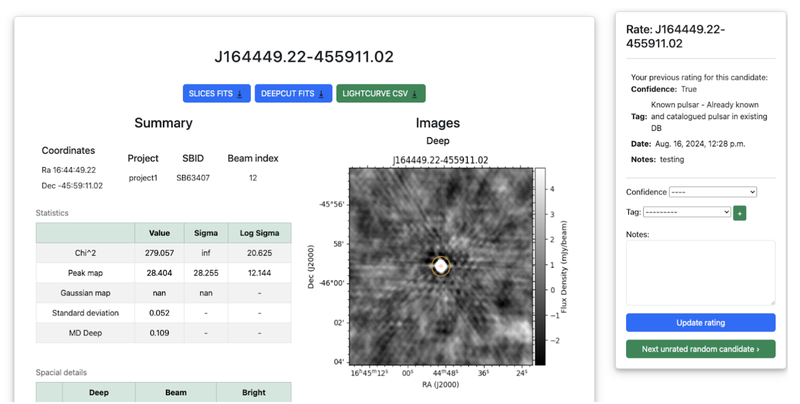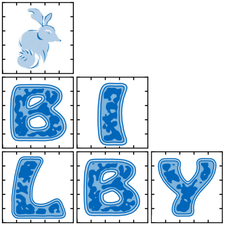Transient phenomena are laboratories for exploring some of the most extreme processes in the universe. The ASKAP VAST project (Murphy et al. 2013; 2021) aims to discover and study a wide range of radio transients in the ASKAP full survey. The VAST team has developed the VASTER pipeline for detecting short timescale variability (from seconds to minutes) in ASKAP data. The prototype of the VASTER pipeline has been demonstrated effectively in published works (Wang Y. et al. 2021, 2023). In future real-time mode, the pipeline expects to detect about 100 candidates per day, including some of the most exciting objects such as bursts from radio stars (Pritchard et al. 2021), extreme scintillators (Wang Y. et al. 2021) and long period transients (Hurley-Walker et al. 2022).
This ADACS project helped build a web app for source classification from VASTER pipeline outputs. As the pipeline is likely to detect about 100 candidates per day, we will have a large number of candidates waiting for inspection and investigation. The newly built web application enables users to easily filter through candidates by observations, beam indices and various statistics. For each candidate, users are presented with a clear view of all the data and images without the need for using any sort of command line interface. Data from the observation and candidates can easily be downloaded e.g. fits files, deep images, peak lightcurve CSVs, as well as the classification and any notes that users have made for each candidate. Users will also be able to view a summary of all the classifications that have been made by all users and bar charts to show the counts of the number of candidates classified with a particular tag, being either predefined or created by the user.

Figure: the classification page for one candidate.
With the help of the classification web app, we can efficiently classify a large number of transients. This can help address several key goals of the VAST project, in particular:
- Characterising radio stellar flaring across the entire range of spectral types, and determine the effects of M-dwarf flaring on the habitability of any exoplanetary systems they host;
- Determining the origin of Galactic centre radio transients by building a population of these rare objects with dedicated monitoring of the centre of the Milky Way;
- Discovering new classes of radio transients such as ultra-long-period neutron stars and extreme pulsars overlooked by traditional pulsar surveys;
- Mapping the gas in our Galaxy using scintillating AGN as backlights to identify nearby plasma screens.



